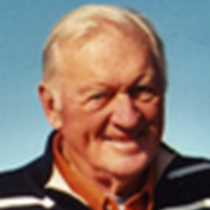Hells Canyon and Clearwater River, Idaho
Today the theme was of course “In the Wake of Lewis & Clark,” but this section of the Corps’ journey – east and west – took place in fabled Nez Perce country. Our surroundings have long been the home of the Nez Perces, perhaps for ten thousand years. A video shown after breakfast established the theme of Nez Perce history and culturem, and the day ended with Sea Lion guests meeting at the Nez Perce National Historical Park at Spalding, Idaho. Along the way, the Lewis & Clark story was revealed in fact, anecdote, and while walking over the probable footprints of Thomas Jefferson’s explorers.
About 9:00 AM guests left for separate destinations. One group disembarked the Sea Lion and walked across the Clarkston, Washington wharf to board a large jet boat. The fast trip on the fabled Snake River took guests about 60 miles into Hells Canyon. Sun breaks interrupted an overcast sky during the exciting trip upriver. The reputation of this legendary place as a haven for wildlife proved accurate. A Trumpeter swan was seen soaring above – a rare sight, Big Horn sheep crept along the basalt cliffs, and tireless fishers pulled in migrating fish, mostly the delicious-tasting steelhead (Lewis & Clark called them “Sea Trout”). The jet boat captain described geological features along the way. In fact, Hells Canyon and much of the Snake River in general hold millions of years of our earth’s history. Two stops were made: the first at Cache Creek to wander through a small museum dedicated to Hells Canyon history; and the second at Heller’s Bar where a buffet lunch was served beside the river.
The second separate guest adventure was aboard a motor coach that followed the Clearwater River (“Kooskooskie” in Lewis & Clark language) along the exact route of the Corps. Our guide, a longtime resident of the Idaho panhandle, used the Journals to lead guests onto the virtual 200-year-old sites left behind by Lewis & Clark. At each stop, usually after guests disembarked the motor coach, L&C incidents or campsites were described. Using our imaginations, we were asked to peer across streams, into valleys, at surrounding ridges, while picturing particular 1805-1806 events. A buffet lunch at a bakery-café in the small, friendly Idaho town of Kamiah was a highlight. After lunch guests stopped for a demonstration of Indian and Lewis & Clark outdoor skills at a Nez Perce National Historical Park site named “Heart of the Monster.”
Mentioned above, both groups met late afternoon at the Nez Perce/Spalding site for a Park Ranger program, a look at the valuable Spalding collection of Nez Perce artifacts, and to browse the gift store. The ghosts of Lewis & Clark seemed to permeate the Native ground, but not always in the role of heroes. That circumstance is the main reason the L&C Bicentennial is referred to as a “commemoration” instead of a “celebration.”
Today the theme was of course “In the Wake of Lewis & Clark,” but this section of the Corps’ journey – east and west – took place in fabled Nez Perce country. Our surroundings have long been the home of the Nez Perces, perhaps for ten thousand years. A video shown after breakfast established the theme of Nez Perce history and culturem, and the day ended with Sea Lion guests meeting at the Nez Perce National Historical Park at Spalding, Idaho. Along the way, the Lewis & Clark story was revealed in fact, anecdote, and while walking over the probable footprints of Thomas Jefferson’s explorers.
About 9:00 AM guests left for separate destinations. One group disembarked the Sea Lion and walked across the Clarkston, Washington wharf to board a large jet boat. The fast trip on the fabled Snake River took guests about 60 miles into Hells Canyon. Sun breaks interrupted an overcast sky during the exciting trip upriver. The reputation of this legendary place as a haven for wildlife proved accurate. A Trumpeter swan was seen soaring above – a rare sight, Big Horn sheep crept along the basalt cliffs, and tireless fishers pulled in migrating fish, mostly the delicious-tasting steelhead (Lewis & Clark called them “Sea Trout”). The jet boat captain described geological features along the way. In fact, Hells Canyon and much of the Snake River in general hold millions of years of our earth’s history. Two stops were made: the first at Cache Creek to wander through a small museum dedicated to Hells Canyon history; and the second at Heller’s Bar where a buffet lunch was served beside the river.
The second separate guest adventure was aboard a motor coach that followed the Clearwater River (“Kooskooskie” in Lewis & Clark language) along the exact route of the Corps. Our guide, a longtime resident of the Idaho panhandle, used the Journals to lead guests onto the virtual 200-year-old sites left behind by Lewis & Clark. At each stop, usually after guests disembarked the motor coach, L&C incidents or campsites were described. Using our imaginations, we were asked to peer across streams, into valleys, at surrounding ridges, while picturing particular 1805-1806 events. A buffet lunch at a bakery-café in the small, friendly Idaho town of Kamiah was a highlight. After lunch guests stopped for a demonstration of Indian and Lewis & Clark outdoor skills at a Nez Perce National Historical Park site named “Heart of the Monster.”
Mentioned above, both groups met late afternoon at the Nez Perce/Spalding site for a Park Ranger program, a look at the valuable Spalding collection of Nez Perce artifacts, and to browse the gift store. The ghosts of Lewis & Clark seemed to permeate the Native ground, but not always in the role of heroes. That circumstance is the main reason the L&C Bicentennial is referred to as a “commemoration” instead of a “celebration.”




